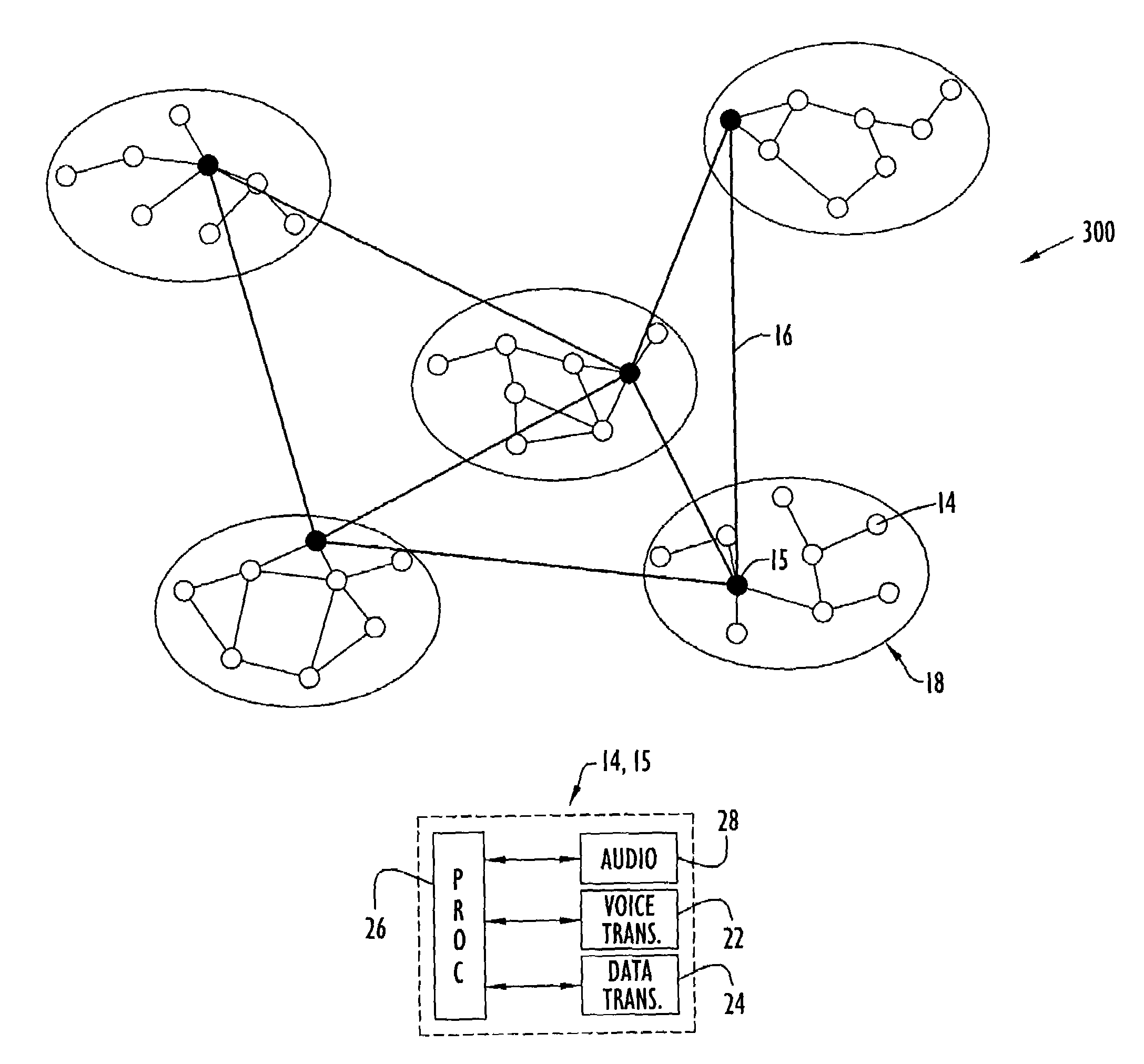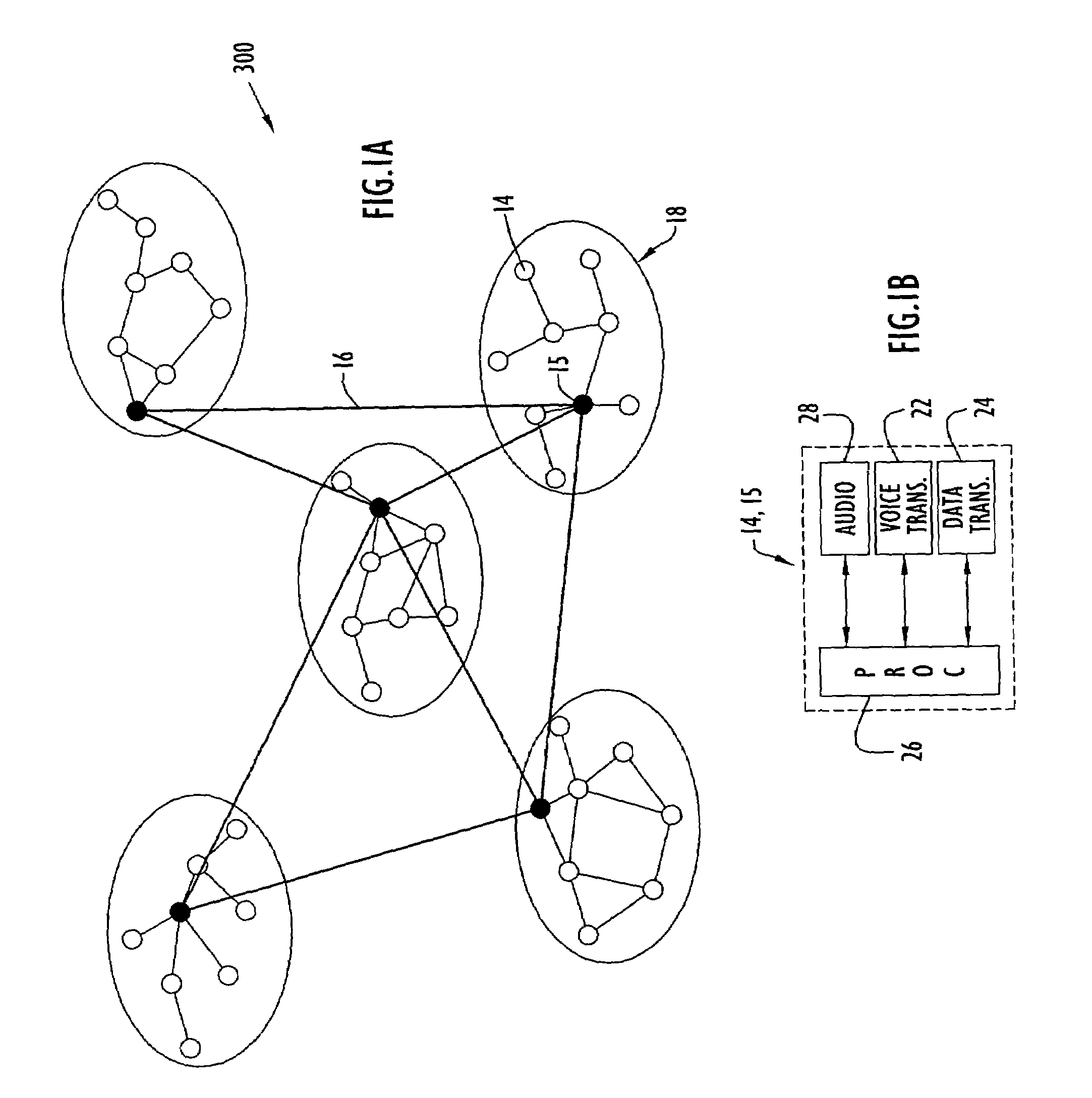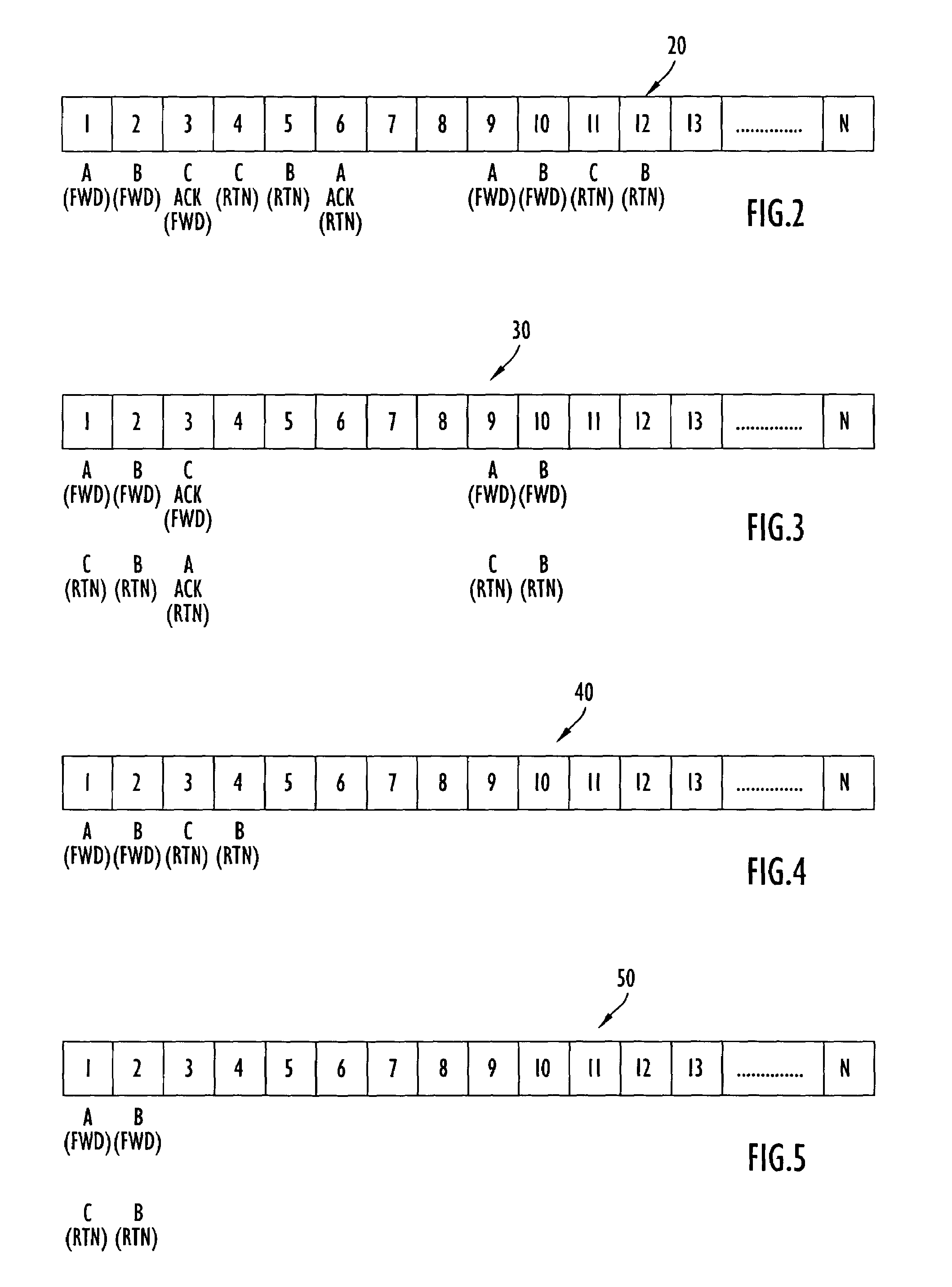Method and apparatus for dynamic voice reservation within wireless networks
- Summary
- Abstract
- Description
- Claims
- Application Information
AI Technical Summary
Benefits of technology
Problems solved by technology
Method used
Image
Examples
Embodiment Construction
[0040]An exemplary network architecture that may be employed by the present invention is a multi-hop wireless Ad-Hoc network. This type of network does not include an infrastructure (e.g., there is no base station as in a cellular network, where a single-hop environment of a cellular network becomes a special case) and may be utilized in a hostile network environment (e.g., a tactical battlefield, etc.) with unfriendly jamming. An exemplary wireless Ad-Hoc network including network nodes according to the present invention is illustrated in FIG. 1A. Specifically, wireless network 300 includes a plurality of nodes 14 arranged in islands 18. Each island is in the form of a flat multi-hop network and includes corresponding island member nodes 14 (e.g., with an approximate maximum of fifty nodes) with one of those member nodes designated as an island head node 15. These island arrangements form a first tier of network 300 and facilitate communication within an island between the island h...
PUM
 Login to View More
Login to View More Abstract
Description
Claims
Application Information
 Login to View More
Login to View More - R&D
- Intellectual Property
- Life Sciences
- Materials
- Tech Scout
- Unparalleled Data Quality
- Higher Quality Content
- 60% Fewer Hallucinations
Browse by: Latest US Patents, China's latest patents, Technical Efficacy Thesaurus, Application Domain, Technology Topic, Popular Technical Reports.
© 2025 PatSnap. All rights reserved.Legal|Privacy policy|Modern Slavery Act Transparency Statement|Sitemap|About US| Contact US: help@patsnap.com



